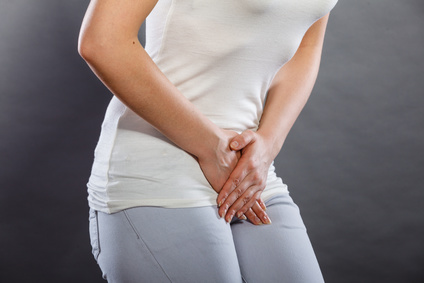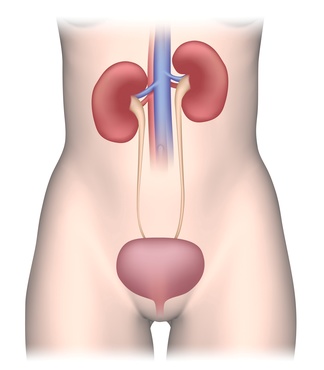Urinary Tract Pain – Location, Causes and Other Symptoms
The urinary system is responsible for filtering wastes from the bloodstream and expelling it as urine. It is also responsible for balancing the fluid volume in the body and maintaining blood pressure among a host of other important functions. Like any other system, the organs of the urinary system – kidneys, ureters, bladder or urethra – can become diseased. This can lead to pain which may be referred to specifically as kidney pain or bladder pain and so on. Urinary tract pain refers to pain arising from any of these organs and often related to the act of passing urine.
Pain before, during or after urinating is known as dysuria. It is a broad term that includes discomfort when urinating including burning during urination. At other times urinary pain may be unrelated to the process of urination. Kidney pain, ureteral pain, bladder pain and urethral pain may persist even when not urinating. In men, the prostate is an important organ to consider in terms of urinary tract pain and any urinary problems. Prostate pain can be mistaken for bladder pain.
Symptoms of Urinary Problems
Urinary pain is a symptom. It is usually an indication of a problem in the urinary system – kidneys, ureters, bladder or urethra. It may be accompanied by other signs and symptoms, most of which are related to the act of urination. Although the pain along with the signs and symptoms can help with diagnosing the underlying cause, various diagnostic investigations are usually necessary.
- Urinary incontinence is where urine involuntarily leaks out of the bladder. It is usually a sign of a bladder problem but can also occur with conditions affecting the urethra and prostate problems in men.
- Frequent urination is a common urinary symptom where urine is passed very often. Usually the bladder is not full but the urge to urinate drives a person to pass urine more frequently than normal. Nocturia (nighttime urination) may also occur.
- Abnormal urine volume where the passage of urine within a 24 hour period is very low (oliguria or anuria) or very high (polyuria). The latter, polyuria, is usually seen as frequent urination as the bladder has to be frequently emptied to deal with the large volume of urine.
- Blood in the urine (hematuria) is usually not visible to the naked eye. It is detected with tests like urine dipstick which may be done to diagnose the cause of urinary tract pain and other urinary symptoms.
- Abnormal urine color or abnormal urine odor are also symptoms of urinary problems. Urine color can vary from the clear to pale yellow color that is considered normal. Urine odor can also deviate from the characteristic ammonia smell.
- Other abnormalities may include:
– Protein in the urine (proteinuria)
– Foamy urine
– Cloudy urine
Location of Urinary Tract Pain
Since urinary tract pain refers to pain anywhere along the urinary tract, it may not be localized to one area. It depends on which urinary organ is the source of the pain.
- Flank pain – kidney
- Loin pain – ureter (flank pain)
- Pelvic pain (above genitals) – bladder pain or prostate pain (men)
- Genital pain – urethra
It is not uncommon for back pain to be reported in kidney and bladder problems. Some people may also experience abdominal pain with urinary conditions. Genital, scrotal or testicular pain may also be present in men with bladder and prostate problems.
Causes of Urinary Pain
Urine is produced in the kidney by filtering waste products, excess electrolytes and water from the blood. It is then passed down the ureter to the kidney where it stored. Upon voiding (passing of urine), urine is then forced out of the bladder and into the urethra from where it is passed into the environment.
Urinary problems may arise in one of four processes :
- Production of urine (glomerular filtration).
- Passage of urine from the kidney to the urethra.
- Storage of urine in the bladder.
- Passing of urine (voiding).
The causes of urine pain can be broadly divided into infectious and non-infectious causes. Some of the more common infectious and non-infectious causes of urinary tract pain has been discussed below. It is important to seek medical attention for an exact diagnosis.
Infections
Urinary tract infections (UTIs) may involve any part of the urinary system – kidneys, ureters, bladder or urethra. Most of the time these infections affect the lower urinary tract – bladder and urethra. These infections are more frequently bacterial and the bacteria enters through the urethra. It then ascends up the urinary tract to the bladder.
Kidney infections are not always due to infections in the bladder spreading upwards (ascending infection). Instead the bacteria may reach the kidney through the bloodstream. The bacteria may be from an infection at another site in the body and then spread to the kidney. Prom[t medical attention is needed for all urinary tract infections to prevent complications.
Stones
Urinary stones are another common cause of urinary tract pain. Most of the time these stones form in the kidney and then pass out through the ureter to the bladder. If it is too large then the stone may be unable to pass out of the bladder. Smaller stones can pass out through the urethra during urination but is usually painful. These stones form from the components of urine. Sometimes stones form in the bladder and is more likely to happen with a bladder infection.
Cancers
Bladder and kidney cancers can also cause pain in the respective locations. These cancers arise from the cells in the organ. Bladder cancer starts from the cells of the bladder whereas kidney cancers originate from cells of the kidney. However, cancers that start elsewhere in the body can spread to the bladder or kidney which is known as metastasis. Prompt medical treatment is needed for cancer to prevent deadly outcomes.
Other Causes
There are a host of other kidney, ureter, bladder and urethra conditions that may cause urinary tract pain. The symptoms overlap and it can be difficult to identify these other diseases without further diagnostic investigations. Some of these conditions may include:
- Pyelonephritis
- Kidney cysts
- Kidney injury (trauma)
- Renal infarction
- Ureteral strictures
- Bladder injury
- Bladder spasms
- Interstitial cystitis
- Prostate problems (men)







